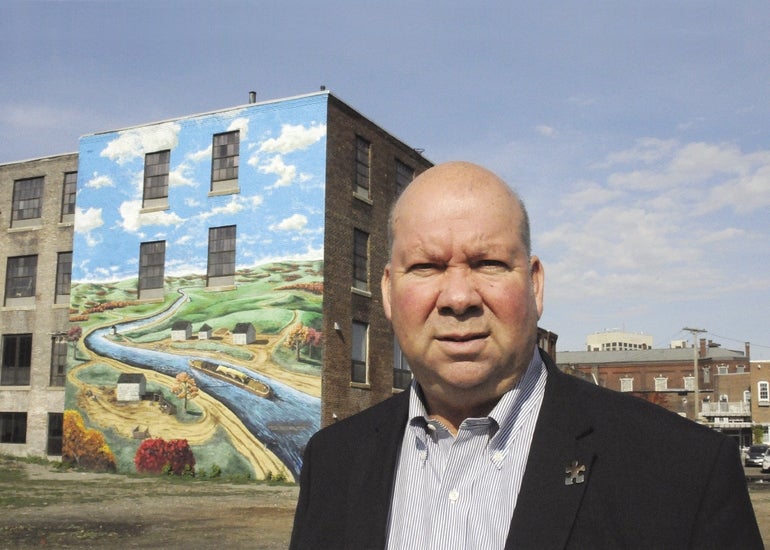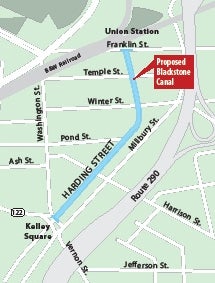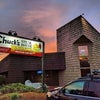Worcester group sees lift for tourism in Blackstone Canal revival
Nearly two centuries ago, the Blackstone Canal helped catapult Worcester, then primarily a farming community, into the industrial age. But by 1848, the canal was closed and later capped after it served as the area's major trade route to Providence.
Today, the Canal District Alliance, a group of business and civic leaders in the area around Kelley Square, has been campaigning for 10 years to reopen this symbol of 19th-century Worcester and now, $3 million in state money has been earmarked to explore replacing Harding Street with a canal and walkway.
Proponents of the effort say Worcester deserves to dream big and pull in the tourism and notoriety it deserves, while others question whether the project is the best use of the space, and limited funds coming into the city.
To talk to John Giangregorio about reopening the Blackstone Canal is to discuss a potential waterway renaissance for Worcester. The president of the alliance makes comparisons to similar efforts at Providence's Waterplace Park, which hosts a popular Waterfire Festival each year, and redevelopment of the Erie Canal in Buffalo.
Giangregorio sees a canal as an “economic generator. People will want to live and work near the water,” he said. “This will be a destination neighborhood. This is an area where something is happening.”
The alliance has been pushing to promote the Canal District as a desirable and distinct area of Worcester. Through ongoing programming such as Canalfest, Pauly's Jazz Festival and informational wagon rides during the summer, the area's image has been transformed, Giangregorio said. Erin Williams, Worcester's cultural development officer, agrees, saying the group has brought a renewed energy to the area.
“The Canal District Alliance has … made great headway in bringing that district to life,” she said.
All of this outreach has been building to the group's ultimate goal: freeing the canal. A large section of it is still open at the Blackstone River and Canal Heritage State Park in Uxbridge, but the alliance has set its sights on Harding Street, from behind Union Station to Kelley Square, where the canal sits 16 feet below the road surface.
$3M boost from Beacon Hill
The effort received a boost in August when $3 million was set aside in an environmental bond bill signed by Gov. Deval Patrick. The money would fund a study of the area that would evaluate how much it would cost to either open up the canal or re-create a version of it on the road's surface.
“There's been a lot of tension between this concept between opening the canal, which many people think would be impossible because a sewer has run through it, and replicating the canal, which is what many cities have done,” State Rep. Mary Keefe said of one of the main questions the study would answer.
Keefe has pushed for the study, which, if completed, would propel the project toward being put out to bid.
Not everyone favors a reopening of the canal. At a recent city council meeting, officials were asked to support the bond bill as a show of solidarity for the canal funding. Although these projects made it into the bill, funding is not guaranteed, Keefe said, and showing broad community support is important.
District 2 Councilor Philip Palmieri was the one dissenting vote at that meeting, when the council voted 9-1 for the bond bill. Palmieri said there are other projects throughout the city that deserve the $3 million. Improvements to Green Hill Park and a walkway along Lake Quinsigamond are being completed for less, he said. (Disclosure: The Worcester Business Journal rents office space from Palmieri.)
“It is going to be 10 to 15 years until we see something because this is a study,” Palmeiri said. “People don't want the canal. It's an empty promise.”
He also argues that the ongoing discussion around the canal has stalled real estate development along Harding Street. Developers are aware of the ongoing canal discussion, he said, and that uncertainty scares off development.
Giangregorio said there is significant local support and rebuffs the idea that Harding Street development has not moved forward because of the possibility of a canal.
“Everybody is in favor of progress, but nobody wants any change … No matter what you want to do in the city, it is 'no, no no,'” he said. “The average person in Worcester has a hard time understanding what an economic benefit this can be to the city.”
Exhibit 1: Providence
The alliance points to Waterplace Park in Providence as an example of the benefits of resurrecting a waterway. The Rhode Island capital has seen economic benefits from opening the Providence River, which runs through the city. WaterFire, a summer-long arts festival with floating bonfires on the river, is one program that has resulted from the development that opened 1.5 miles of riverwalks, which generated $113 million in economic impact for the city and $9.3 million of annual tax revenue for the state and city, according to WaterFire Providence, the nonprofit organization that hosts the event.
“When the rivers opened up, it really became a beacon and a hope for a renewed change,” said Lynne McCormack, Providence's director of art, culture and tourism. “Providence is a post-industrial city just like Worcester and really had fallen into decline … there was a big, bold idea needed for a change in the city. … The change was significant in people being able to believe in the city again.”
Williams, Worcester's cultural development officer, applauds the efforts of those in the canal district to bring attention to the area. Worcester is in the process of casting itself as a cultural center, she said, with the payoff so far being a tourism boost from 1 million visitors to area cultural locations in 2006 to 2.7 million last year.
“If the canal can come to life, that is wonderful but more important is that the energy behind the canal (must) be sustained,” Williams said.
The city needs to have people with big ideas, such as the canal, she said, but it's also important how those ideas are made into a reality.
A number of unresolved questions remain about a potential revival of the canal, from cost to scope and the impact on traffic and the economy. The study will address many of those concerns, said Keefe, who believes it's important that Worcester continue to go after large, high-impact projects.
“We need to start acting like the second largest city in New England,” Keefe said. “I'm hopeful as we are being a strong local voice … that we can see more of these projects happen.”











0 Comments